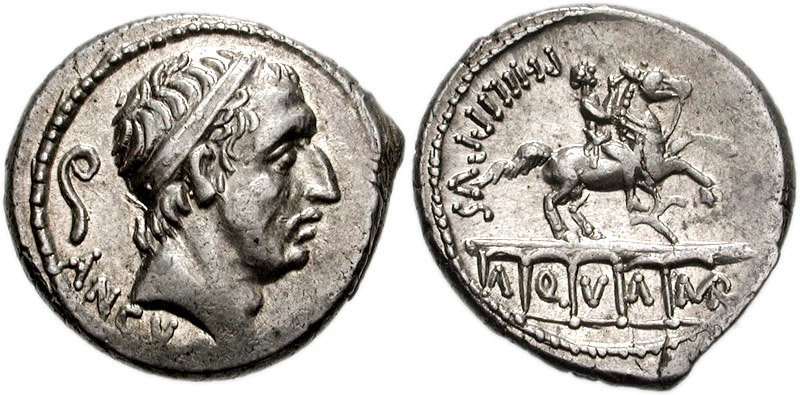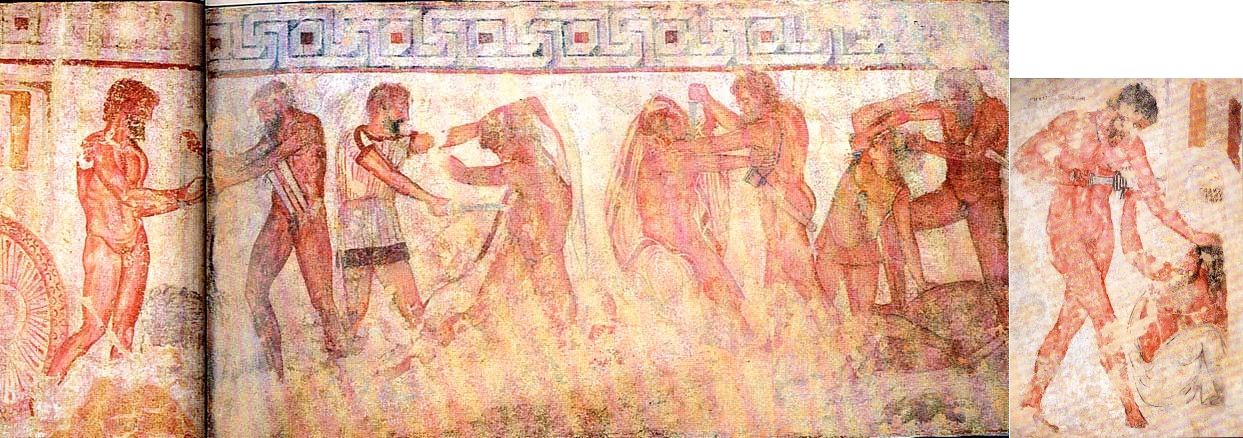|
Marcus (praenomen)
Marcus () is a Latin '' praenomen'', or personal name, which was one of the most common names throughout Roman history. The feminine form is ''Marca'' or ''Marcia''. The praenomen was used by both patrician and plebeian families, and gave rise to the patronymic '' gens Marcia'', as well as the ''cognomen Marcellus''. It was regularly abbreviated M.''Dictionary of Greek & Roman Biography & Mythology''''Realencyclopädie der Classischen Altertumswissenschaft''Mika Kajava, ''Roman Female Praenomina: Studies in the Nomenclature of Roman Women'' (1994) At all periods of Roman history, Marcus was the third-most popular praenomen, trailing only ''Lucius'' and ''Gaius''. Although many prominent families did not use it, it was a favorite of countless others. The name survived the Roman Empire and has continued to be used, in various forms, into modern times. Origin and meaning of the name The praenomen Marcus is generally conceded to be derived from the name of the god Mars. It has been pr ... [...More Info...] [...Related Items...] OR: [Wikipedia] [Google] [Baidu] |
Praenomen
The ''praenomen'' (; plural: ''praenomina'') was a personal name chosen by the parents of a Roman child. It was first bestowed on the ''dies lustricus'' (day of lustration), the eighth day after the birth of a girl, or the ninth day after the birth of a boy. The praenomen would then be formally conferred a second time when girls married, or when boys assumed the '' toga virilis'' upon reaching manhood. Although it was the oldest of the ''tria nomina'' commonly used in Roman naming conventions, by the late republic, most praenomina were so common that most people were called by their praenomina only by family or close friends. For this reason, although they continued to be used, praenomina gradually disappeared from public records during imperial times. Although both men and women received praenomina, women's praenomina were frequently ignored, and they were gradually abandoned by many Roman families, though they continued to be used in some families and in the countryside. Backgr ... [...More Info...] [...Related Items...] OR: [Wikipedia] [Google] [Baidu] |
Given Name
A given name (also known as a forename or first name) is the part of a personal name quoted in that identifies a person, potentially with a middle name as well, and differentiates that person from the other members of a group (typically a family or clan) who have a common surname. The term ''given name'' refers to a name usually bestowed at or close to the time of birth, usually by the parents of the newborn. A ''Christian name'' is the first name which is given at baptism, in Christian custom. In informal situations, given names are often used in a familiar and friendly manner. In more formal situations, a person's surname is more commonly used. The idioms 'on a first-name basis' and 'being on first-name terms' refer to the familiarity inherent in addressing someone by their given name. By contrast, a surname (also known as a family name, last name, or ''gentile name, gentile'' name) is normally inherited and shared with other members of one's immediate family. Regnal names ... [...More Info...] [...Related Items...] OR: [Wikipedia] [Google] [Baidu] |
Marcia (gens)
The gens Marcia (), occasionally written Martia, was one of the oldest and noblest houses at ancient Rome. They claimed descent from the second and fourth Roman Kings, and the first of the Marcii appearing in the history of the Republic would seem to have been patrician; but all of the families of the Marcii known in the later Republic were plebeian. The first to obtain the consulship was Gaius Marcius Rutilus in 357 BC, only a few years after the passage of the ''lex Licinia Sextia'' opened this office to the plebeians.''Dictionary of Greek and Roman Biography and Mythology'', vol. II, p. 940 ("Marcia Gens"). Origin The Marcii are supposed to have been Sabines, descended from a certain Marcus Marcius of Cures, a kinsman of Numa Pompilius, and his son, Numa Marcius, a childhood friend of Pompilius, who accompanied him to Rome and served as his chief advisor. His son, the younger Numa Marcius, was urban prefect under Tullus Hostilius, and his grandson was Ancus Marcius, the f ... [...More Info...] [...Related Items...] OR: [Wikipedia] [Google] [Baidu] |
Cognomen
A ''cognomen'' (; plural ''cognomina''; from ''con-'' "together with" and ''(g)nomen'' "name") was the third name of a citizen of ancient Rome, under Roman naming conventions. Initially, it was a nickname, but lost that purpose when it became hereditary. Hereditary ''cognomina'' were used to augment the second name, the ''nomen gentilicium'' (the family name, or clan name), in order to identify a particular branch within a family or family within a clan. The term has also taken on other contemporary meanings. Roman names Because of the limited nature of the Latin '' praenomen'', the ''cognomen'' developed to distinguish branches of the family from one another, and occasionally, to highlight an individual's achievement, typically in warfare. One example of this is Gnaeus Pompeius Magnus, whose cognomen ''Magnus'' was earned after his military victories under Sulla's dictatorship. The ''cognomen'' was a form of distinguishing people who accomplished important feats, and those who ... [...More Info...] [...Related Items...] OR: [Wikipedia] [Google] [Baidu] |
Roman Empire
The Roman Empire ( la, Imperium Romanum ; grc-gre, Βασιλεία τῶν Ῥωμαίων, Basileía tôn Rhōmaíōn) was the post-Republican period of ancient Rome. As a polity, it included large territorial holdings around the Mediterranean Sea in Europe, North Africa, and Western Asia, and was ruled by emperors. From the accession of Caesar Augustus as the first Roman emperor to the military anarchy of the 3rd century, it was a Principate with Italia as the metropole of its provinces and the city of Rome as its sole capital. The Empire was later ruled by multiple emperors who shared control over the Western Roman Empire and the Eastern Roman Empire. The city of Rome remained the nominal capital of both parts until AD 476 when the imperial insignia were sent to Constantinople following the capture of the Western capital of Ravenna by the Germanic barbarians. The adoption of Christianity as the state church of the Roman Empire in AD 380 and the fall of the Western ... [...More Info...] [...Related Items...] OR: [Wikipedia] [Google] [Baidu] |
Mars (mythology)
In ancient Roman religion and myth, Mars ( la, Mārs, ) was the god of war and also an agricultural guardian, a combination characteristic of early Rome. He was the son of Jupiter and Juno, and was pre-eminent among the Roman army's military gods. Most of his festivals were held in March, the month named for him ( Latin ''Martius''), and in October, which began the season for military campaigning and ended the season for farming. Under the influence of Greek culture, Mars was identified with the Greek god Ares,''Larousse Desk Reference Encyclopedia'', The Book People, Haydock, 1995, p. 215. whose myths were reinterpreted in Roman literature and art under the name of Mars. The character and dignity of Mars differed in fundamental ways from that of his Greek counterpart, who is often treated with contempt and revulsion in Greek literature. Mars's altar in the Campus Martius, the area of Rome that took its name from him, was supposed to have been dedicated by Numa, the peace-lov ... [...More Info...] [...Related Items...] OR: [Wikipedia] [Google] [Baidu] |
Jacques Heurgon
Jacques Heurgon (25 January 1903 – 27 October 1995) was a French university, normalian, Etruscan scholar and Latinist, professor of Latin language and literature at the Sorbonne. Married to Anne Heurgon-Desjardins, founder in 1952, of the Centre culturel international de Cerisy-la-Salle, he was the father of , politician and historian, Catherine Peyrou and Edith Heurgon who continued the "Colloques of Cerisy". A member of the École française de Rome (1928–1930), he was elected a member of the Académie des Inscriptions et Belles-Lettres in 1969. Biography Coming from a family of Parisian jewelers, he studied at the lycée Condorcet, where he met poet Jean Tardieu, with whom he would correspond for twenty years. Entered in the École normale supérieure in 1923, he was received at the first rank of the agrégation de lettres. In 1926, he married the daughter of his former professor in khâgne, Paul Desjardins, who would organize at the abbaye de Pontigny the "", liter ... [...More Info...] [...Related Items...] OR: [Wikipedia] [Google] [Baidu] |
Roman Naming Conventions
Over the course of some fourteen centuries, the Romans and other peoples of Italy employed a system of nomenclature that differed from that used by other cultures of Europe and the Mediterranean Sea, consisting of a combination of personal and family names. Although conventionally referred to as the ''tria nomina'', the combination of praenomen, nomen, and cognomen that have come to be regarded as the basic elements of the Roman name in fact represent a continuous process of development, from at least the seventh century BC to the end of the seventh century AD. The names that developed as part of this system became a defining characteristic of Roman civilization, and although the system itself vanished during the Early Middle Ages, the names themselves exerted a profound influence on the development of European naming practices, and many continue to survive in modern languages. Overview The distinguishing feature of Roman nomenclature was the use of both personal names and regular ... [...More Info...] [...Related Items...] OR: [Wikipedia] [Google] [Baidu] |
Ancient Roman Praenomina
Ancient history is a time period from the beginning of writing and recorded human history to as far as late antiquity. The span of recorded history is roughly 5,000 years, beginning with the Sumerian cuneiform script. Ancient history covers all continents inhabited by humans in the period 3000 BCAD 500. The three-age system periodizes ancient history into the Stone Age, the Bronze Age, and the Iron Age, with recorded history generally considered to begin with the Bronze Age. The start and end of the three ages varies between world regions. In many regions the Bronze Age is generally considered to begin a few centuries prior to 3000 BC, while the end of the Iron Age varies from the early first millennium BC in some regions to the late first millennium AD in others. During the time period of ancient history, the world population was already exponentially increasing due to the Neolithic Revolution, which was in full progress. While in 10,000 BC, the world population stood at ... [...More Info...] [...Related Items...] OR: [Wikipedia] [Google] [Baidu] |




